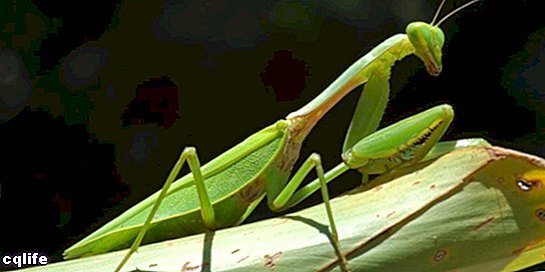We explain what arthropods are and how this group of invertebrates is classified. In addition, its main characteristics and examples.

What are arthropods?
It is known as arthropods to a set evolutionary (orphylum) fromInvertebrate animals complex organization, provided with an external skeleton, segmented bodies and jointed legs (hence its name: from the Greekarthron, "Articulation" andpous, "foot"). They are the most numerous animals on the planet, adapted to any type of environment that exists, that is, they are the animals with the greatest evolutionary success that exist.
One of the main characteristics of arthropods is the segmentation of their legs and their body, united through joints that allowmovements accurate and fast. From there, different forms of articulated appendages arose, such as antennae, pincers, chelicerae, etc.
The phylum of the arthropods appeared in the Earth about 570 million years ago, and due to their morphological relationship with annelids (earthworms and worms), it is assumed that they would have evolved from them. Strong evidence of this could be the larval stage (in the form of caterpillars and larvae) that many arthropods present.
Currently there are more than 1,200,000 species of arthropods approximately, which represents 80% of the species from animals of which you have knowledge. Incidentally, of the arthropod classes, insects are the most numerous.
Classification of arthropods

Arthropods are classified into four large groups or classes:
- Arachnids. Endowed with chelicerae, they lack wings and antennae, and have four pairs of legs. Its body is divided into cephalothorax and abdomen.
- Insects. The most varied and numerous of all arthropods, they have one pair of antennae, three pairs of legs and two pairs of wings (functional or not). Adapted to almost any physical environment, they range from detritophages, parasites, herbivores until predators.
- Crustaceans. They are mostly aquatic, with a presence in the seas, or also in humid terrestrial environments. They always present a nauplius larval stage, characteristic of their evolution as a class.
- Myriapods. Equipped with multiple legs and long bodies, as well as jaws (chelicerae), they are similar to insects in many ways, but they are eminently terrestrial and are usually poisonous.
Characteristics of arthropods
A typical feature of arthropods is that their bodies are successively segmented in a manner similar to that of annelids. In addition, they have well differentiated sections that usually respect the following order: head, thorax and abdomen, apart from their extremities or appendages.
Their bodies are also protected from their rivals or predators by an articulated skeleton formed by chitin (a carbohydrate), which is found outside the body (exoskeleton) and covers it.
This is a problem for the animal when it comes to growing, so that the skeleton must be changed in several successive stages throughout its life. In this way, the development of a new skeleton is allowed, adapted to the larger dimensions of the animal. This process is calledecdysis orchange.
On the other hand, arthropods reproduce in a sexual and their sexes are usually well differentiated. When fertilized, the female lays eggs from which the young will emerge, whose development can be direct or indirect, depending on the species:
- Direct development. When the egg hatches, an individual identical to the adult emerges, only smaller. With the weather and the nutrition, will grow to maturity.
- Indirect. A larva very different from the adult individual will emerge from the egg, which will grow and go through different stages of profound change, called metamorphosis, until they change their shape to that of an adult orimago.
Examples of arthropods
Some simple examples of arthropods are:
- Arachnids. Spiders, scorpions, ticks, mites.
- Insects Cockroaches, praying mantises, butterflies, moths, beetles, bees, aphids, cicadas, fleas, flies, dragonflies, ants and a huge etcetera.
- Crustaceans. Lobsters, crabs, shrimp, prawns, barnacles.
- Myriapods. Centipedes, millipedes, pauropods, symphylae, and moisture mealybugs.
